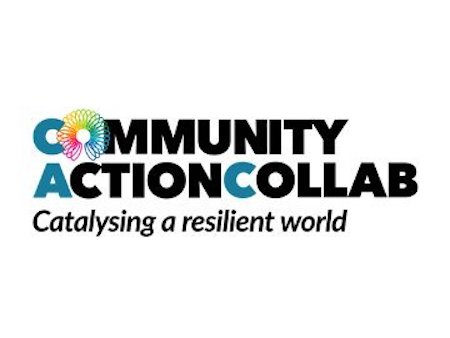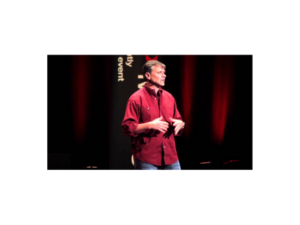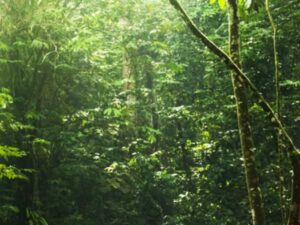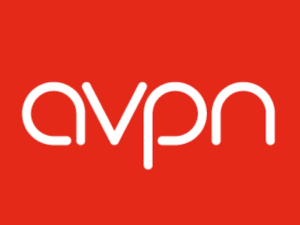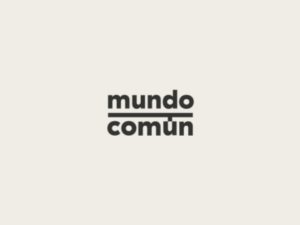Founded during the outbreak of the COVID-19 pandemic, Community Action Collab is a platform where partner organizations can coordinate disaster response and resilience building among vulnerable communities in India.
Flarantxa Pereira, Kunal Parik, and Ambika Sasidharan of Community Action Collab spoke with Jessica Kantor on February 14, 2023. Click here to read the full conversation with insights highlighted.
Jessica Kantor: To begin, can you please introduce yourselves?
Flarantxa Pereira: My name is Flarantxa Parela.
Kunal Parik: I am Kunal Parik, Chief Operating Officer of Community Action.
Ambika Sasidharan: I am Ambika. I’m just a backup in case Flarantxa or Kuna require me.
Jessica Kantor: Can you describe the problem that you are addressing and how you’re responding to it specifically?
Kunal Parik: What happens every time there is a disaster or a crisis like the COVID pandemic we see in India that we end up setting up collaborative alliances after the crisis and that really reduces the disaster response time. The Community Action Collab is our spring to action platform that is working towards preparing communities for disaster and everyday resilience. That’s the key area that we are focused on. Our genesis of Community Action Collab started immediately at the outbreak of COVID-19 and we created a collaborative platform which started with 35 partners in the beginning, but now we have 370 partners which are multi-sectoral, of which 220 organizations work with communities directly on the ground, our civil sector agencies.
Jessica Kantor: Who are the people you’re serving and how do you engage with them?
Kunal Parik: Our focus at Community Action Collab is the vulnerable segments like farmers, fishers, migrants, key population, the people who are engaging in sex work, transgender population, urban poor street vendors. For each of these communities, the idea is to ensure that there is a representation of their voices and there is a very different ecosystem around them for building their resilience. The societal problem that we are solving at the household level is to get the vulnerable households able to absorb, to bounce forward or adapt to, any shocks and disturbance that come. The way we are doing this is through building agency, creating hope and capability for these vulnerable households with the application of the way that they’re able to access services of at least four domains, health, livelihood, social protection and climate action. In all of this, the one thing that we are also trying to address is the structural problems, social and gender norms that affect the agency of the community at the district level or state level or nationalism. We’re working towards that cause.
Jessica Kantor: In a best case scenario, how are people benefiting from your services?
Kunal Parik: During COVID times, for example, the communities got COVID awareness, vaccine readiness to make the communities vaccine ready, ensuring there were funds and vaccine supplies available for the partners to reach the last mile for getting people vaccinated. In COVID times, we have been able to leverage government schemes through our social protection help desk to the tune of 112 million US dollars, which is directly in the hands of the community. The idea is to build resilience, build awareness of the environment that we are operating in. The fact that there is a possibility of more outbreaks, health emergencies and natural disasters due to climate change. [Building] awareness of that, getting them to be ready, working in a way that they’re ready to respond to such emergencies and adapt.
Jessica Kantor: What makes your approach distinctive?
Kunal Parik: Even in the social sector, it’s divided where there are health programs by funders and partners who work only on health, only on livelihood, et cetera. Our idea is to integrate otherwise resilience building cannot happen. There are a lot of interconnections between these domains. Usually in our communities, there are trusted partners that work with these communities who have access to the community only for one service, let’s say for health. But even during COVID we saw that livelihoods were lost and that creating an impact was not being addressed. So we are trying to integrate these sector domains at the community level.
Jessica Kantor: Can you share an example of the impact of your work?
Kunal Parik: Our Vaccine Now program [aimed] to vaccinate people during COVID-19, especially vulnerable communities at the last mile. We looked at this program, it was incubated in our impact canvas solutions lab where multi-sectoral partners and government representation came in to define the problem to create solutions that can be piloted and scaled. The public, private sector, civil sector and media plays a large role in addressing the hesitancy or access barriers to the communities. This program at the Collab network level with these partnerships, we were able to raise the funds and we were able to train our partners both on reaching the communities with the right information, but also how we work with the government. We created pathways for them to engage with the government to leverage their efforts. All this is supported by the media as well as the private sector funds and vaccine supplies. When we started off there was a pilot going on and there were always early adopters and there will be certain organizations who come later once the proof of concept is done. We have now, through approximately 80 partners, been able to vaccinate 14 million people across the country. Usually we focused on where the vaccine coverage by the government was low at the state level, we focused on that. As a collaborative we were able to raise the resources, give the template operational know-how and were able to redirect it to those pockets regionally and community-wise where it is needed the most.
Jessica Kantor: How are you measuring success?
Kunal Parik: In Community Action Collab, we’ve been measuring success by our one goal. Our aim is to have the 10 million vulnerable people experience resilience in their life and livelihoods. The way we are measuring that is on a resilience journey map of the individual VP communities [looking at] where they were before and after CAC interventions.
This is a three year plan that we work with. The second goal is that we want to do this to reach 10 million [people living in] vulnerable populations or special groups. During COVID times, a lot of the funding got diverted to COVID and a lot of NGOs and civil sector agencies had to shut down or ramp down their operations. To ensure that the partner is also resilient [we can use] the same resilience journey map for the partners and institutional resilience. Lastly, we are looking at what the systemic readiness is that this platform has to respond to. We will test how we have reduced the disaster response time. Finally we are looking at creating community champions that will represent voices of each community at various platforms, at both the state and national levels.
Jessica Kantor: Other than the number of individuals that have been vaccinated, what other evidence do you have that you’re making progress?
Kunal Parik: I think the vaccination [is first] and the second one is what I mentioned about $112 million leveraged by government schemes in the hands of the community. The third one is we are also doing livelihood interventions, but because of COVID, we are still working on building the capacities of the organizations for the livelihood instances. Lastly, I think for us as a collaborative platform, it is the partners working together, the collaborations between the partners, the asks and gives and matching between partner organizations. We had recorded during COVID times 700 such partner connections. We feel that it’s evidence that this collaborative action platform is working. In all of this we’ve created a very trusted network.
Jessica Kantor: Every social innovator learns from things that don’t work as much as learns from things that do. Do you have something specific that you guys tried, maybe early on that didn’t work that taught you an important lesson that others could learn from as well?
Kunal Parik: Our impact canvas or the solution lab that we created, we had 24 initiatives innovations out of which 11 have got scaled, some of them got hibernated and we realized, let’s say we created this high impact package during COVID, which was health awareness, vaccine readiness and social protection coming together. Because of the multiple waves, we had to constantly pivot interventions. We learned in a volatile, uncertain, complex and ambiguous environment to be agile, to constantly listen to the ground, pivoting, dropping things when it’s not required and scaling things that work on the ground. For us that has been a key lesson.
Jessica Kantor: Aside from raising sufficient funds, which is something that every social innovator faces a challenge with, are there any challenges that you’re currently facing that you haven’t been able to overcome or solve?
Kunal Parik: I would say there are two challenges that we have. One, we’ve seen that the collaborative works. We saw during COVID that the funders were more amenable to fund the collaborative rather than individual organization for convenience as well as for the scale that it can create. It definitely makes sense. However, now that COVID is over, to create funding for the backbone organization for every collaborative, that is still a daunting task for us. The second one is the sector is used to funding through specifically either a health intervention or a library intervention. We are framing the context as building resilience, let’s say for farmers, for fishers, for specific communities or specific geographies, to create those investment templates. While there is a definite appreciation of this long-term view to create avenues for investable products and investment templates that funders can help us in resources for initiatives on the ground, that’s another challenge that we are currently facing.
Jessica Kantor: Are you working to advance systems level change right now?
Kunal Parik: Yes, one is building community champions that represent these different segments for policy implementable practices on the ground and to represent at different platforms that we create. Second is to create a conducive platform for collaboration among all the ecosystem partners. The third one is the agency building. The structural shifts, there are social gender norms, there are inequities that exist while we focus on agency building and creating collective power of the communities, at the community level we need to also address these structural shifts that are required. So these are the system changes that we foresee.
Jessica Kantor: And for those systems level changes to take place. What do you think is most needed on the side of your partners in order to enact that change?
Kunal Parik: We definitely see the government playing a big role. Our engagement with the government as well as ensuring that we are able to represent the community voices, in creating implementable practices, the policy formulation factors, different community segments that are affecting and we are able to give this to and fro information and a ability to unlock the government resources for the welfare of the most poor, most vulnerable. Second is there are investments needed for market players there we see that the private sector as well as the market players have. For them, it makes sense for the welfare and wellbeing of the large population, of the vulnerable population that exists in India. But to create proof of concept, we will still need some pilots, grant-based funds to prove that it works. Initial investments will have to be made. These two are big levers for us right now.
Jessica Kantor: We talked about limitations, we talked about some of the challenges, do you have a specific insight from the work that you’ve been doing and the lessons that you’ve been learning that you can share with others who maybe wanted to replicate what you did in their communities?
Kunal Parik: We realized that there is a need for creating multidisciplinary design teams supported by high impact implementation teams. We keep looking at the implementation fidelity, what gets designed by our research or evidence for change teams, what gets designed at that stage and then what happens on the ground, which is going through multiple intermediaries? To ensure that fidelity is there so that it creates the evidence for scale, is very important. There has to be a feedback loop and a redesigning required which for example in vaccines, now we had to do that. Once there were different notifications and different information coming from the government about vaccination, we had to relook at it. That loop has to constantly happen where you are on the ground constantly or you have representation from those communities factoring in your design. I think that’s a constant cycle that we think is a significant insight for us.
Jessica Kantor: How do you see your work evolving over the next five years?
Kunal Parik: We are starting the first batch of our partners to go through this resilience journey. What will it take for them? Why is this required for their communities, for their organization, and what will they have to contribute? What are the changes that are required to create that journey starting point? This will evolve where we are able to demonstrate models of resilience building that works for different communities and for different geographical regions and which can be taken up to national scale as well as. We have aspirations that we could set up a few chapters of Community Action Collab in global south countries. After a couple of years we will have a lot of policy and practice inputs that we can provide through demonstrated models that are working on the ground. Lastly, we are able to create a resilience cover that at least the communities that we are working with, we are able to demonstrate that they are able to bounce forward from the shocks and disturbances, hence the model can be replicated.
Ambika Sasidharan: A couple of lessons for us from Community Action Collab in the last three years of running and orchestrating a collaborative, public/private collaboration in an emergency situation has been a game changer in reaching the vulnerable populations in need and making partnerships work in the context of an emergency situation. I think that has been one of our key learnings and that is something we would like to carry forward. The private partners that we have in the collaborative understand the importance of being associated with a collaborative, understand the importance of working together to make larger systemic shifts. This is one lesson for us. The other lesson being volunteerism. I think we had about 2,000 volunteers in the first wave of the pandemic in India in the collaborative who were all hands on deck, irrespective of whether they knew how to do a certain thing or not. The possibility of quick expansion of resources in a humanitarian crisis was another lesson. The third piece is being inclusive. Our approach has always been people at the center approach and framework of development impact and it’s not necessarily just focused on health or livelihood or social protection or food or food security or anything like that. It’s always been focused on what vulnerable people might require in the times of crisis and how do we bring it all together. We will not be able to make a change if we are working in silo as a catalyst group. The larger systemic shifts happen only when there is a collaborative approach and action and agency building, community agency building. So this approach is what has garnered us the most success in the last three years.
Jessica Kantor: Is there anything else that we didn’t cover that you feel is important to add to anybody who’s trying to learn about your guys’ model, your success, limitations, partnerships?
Kunal Parik: I can just add that there’s been the creation of many collaboratives and alliances and, in that, I think we’ve been able to create a proof of concept during COVID . There is a strong action framework. Some are looking at policy and advocacy and others are looking at how it enables actions on the ground.
Flarantxa Pereira: One strong message that we also want to reiterate is the power of collaborations as much as the intent of every organization. The 373 odd organizations which are part of the collaborative as much as the intent is to support the community, the limitations of doing that as an organization versus the boundarylessness of doing that as part of the collaborative is a game changer. I think the collaborative thinking mindset is something we would want to reiterate and continue focusing on.
Click here to read the full conversation with insights highlighted.
Jessica Kantor is an independent journalist specializing in health, human rights, and social impact. Her work can be found in Fast Company, Healthcare Quarterly, The Las Vegas Review-Journal, and others. She is a living kidney donor.
* This interview has been edited and condensed.
Read about other social innovation organizations launched for emergency response.

